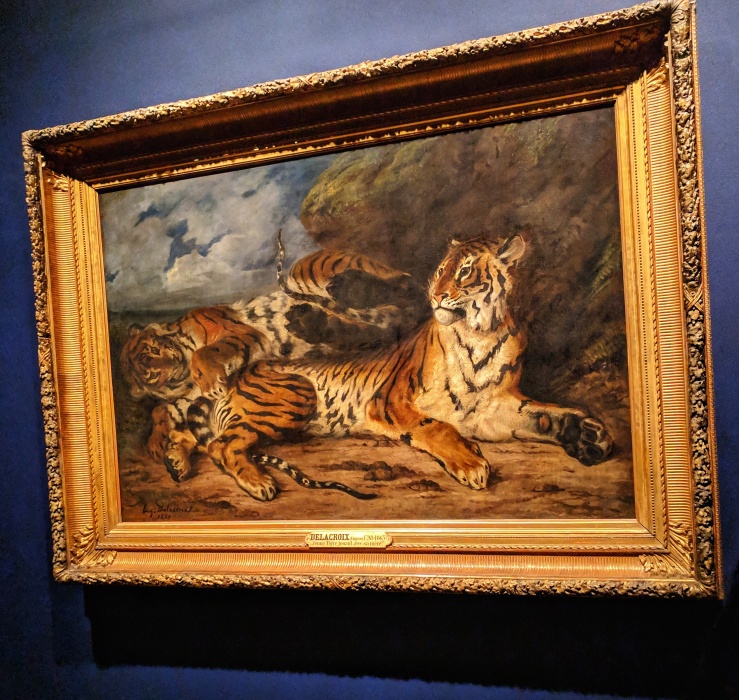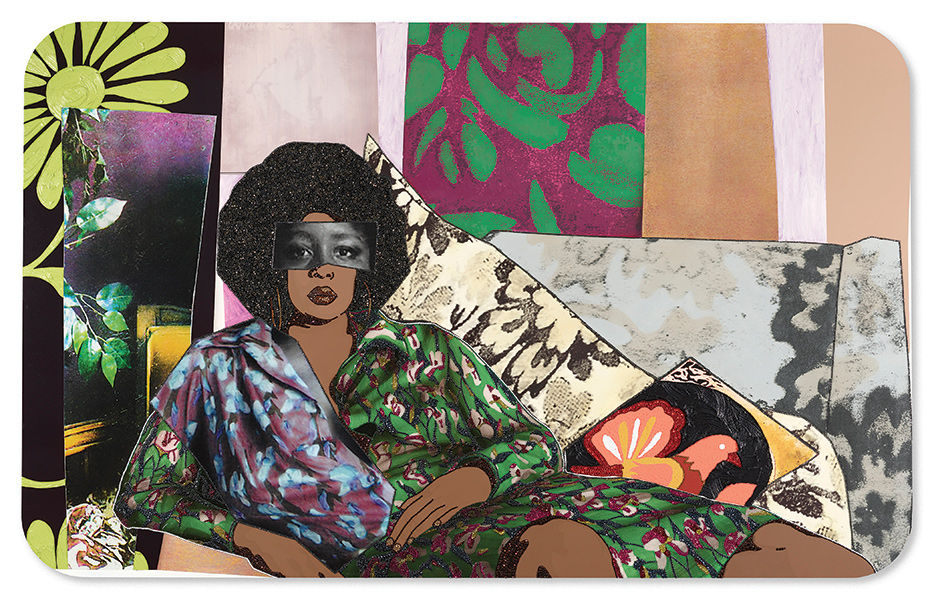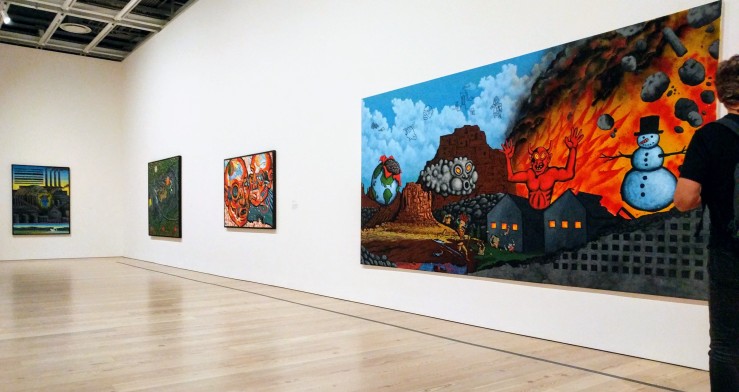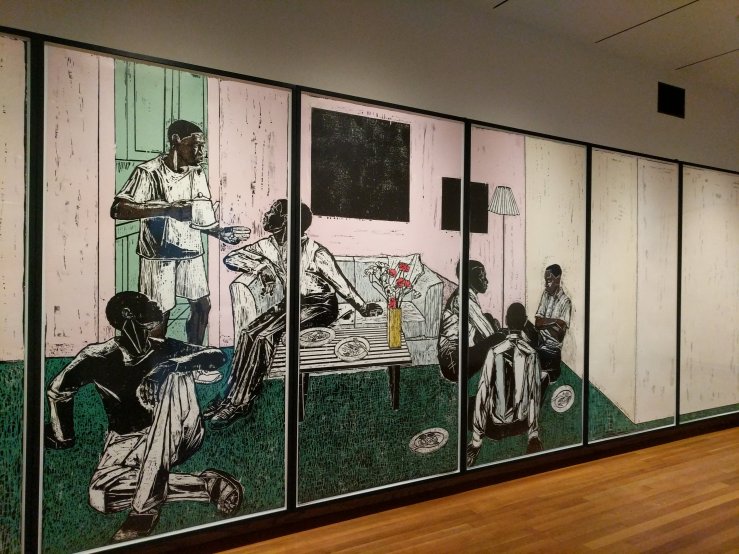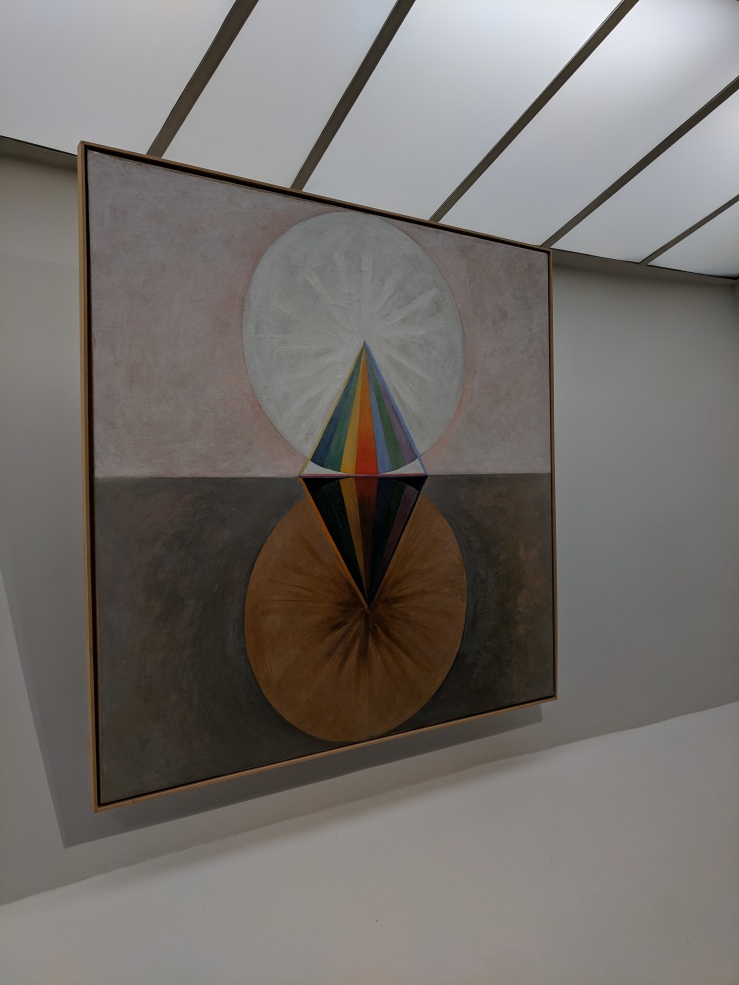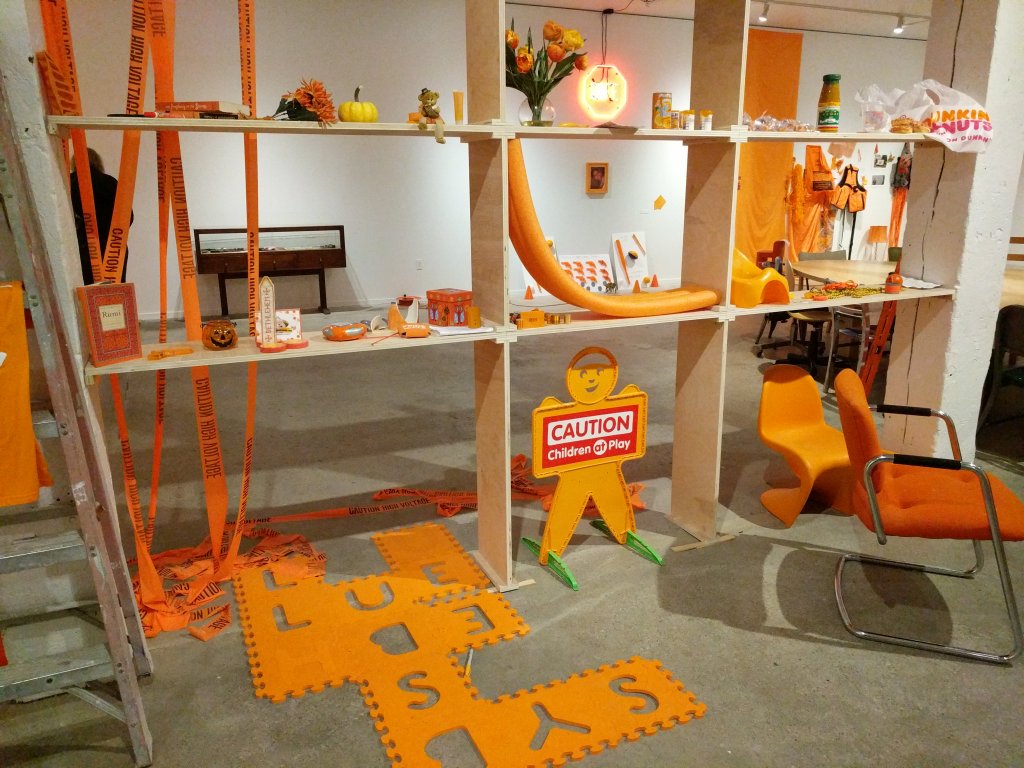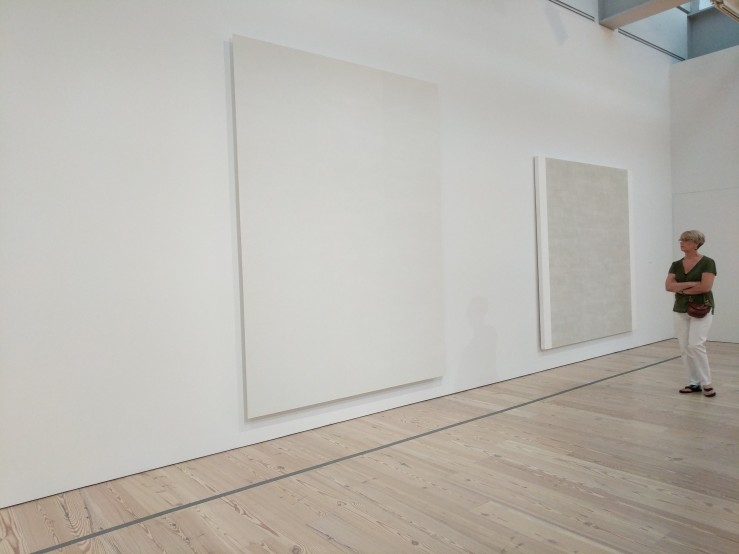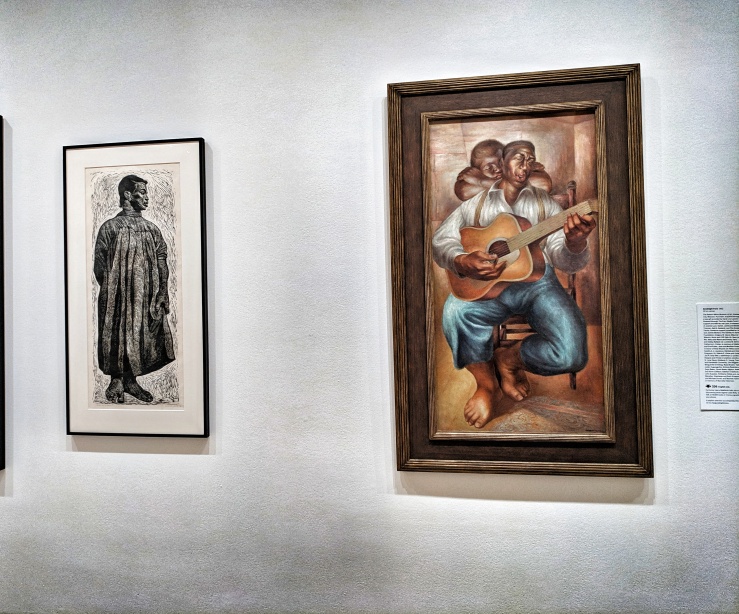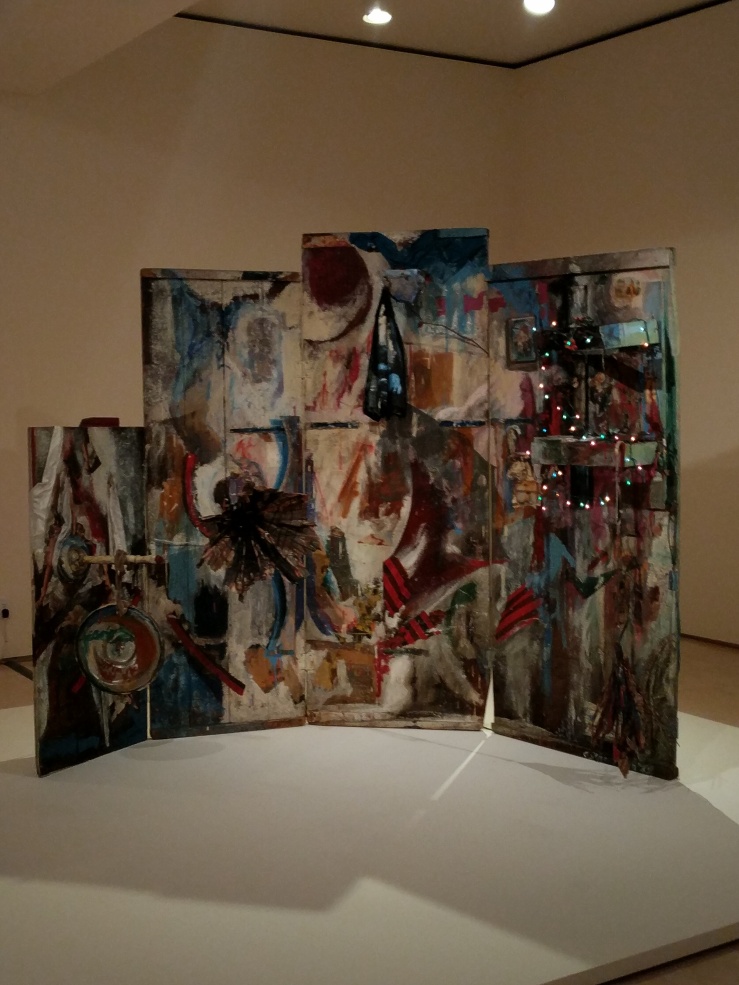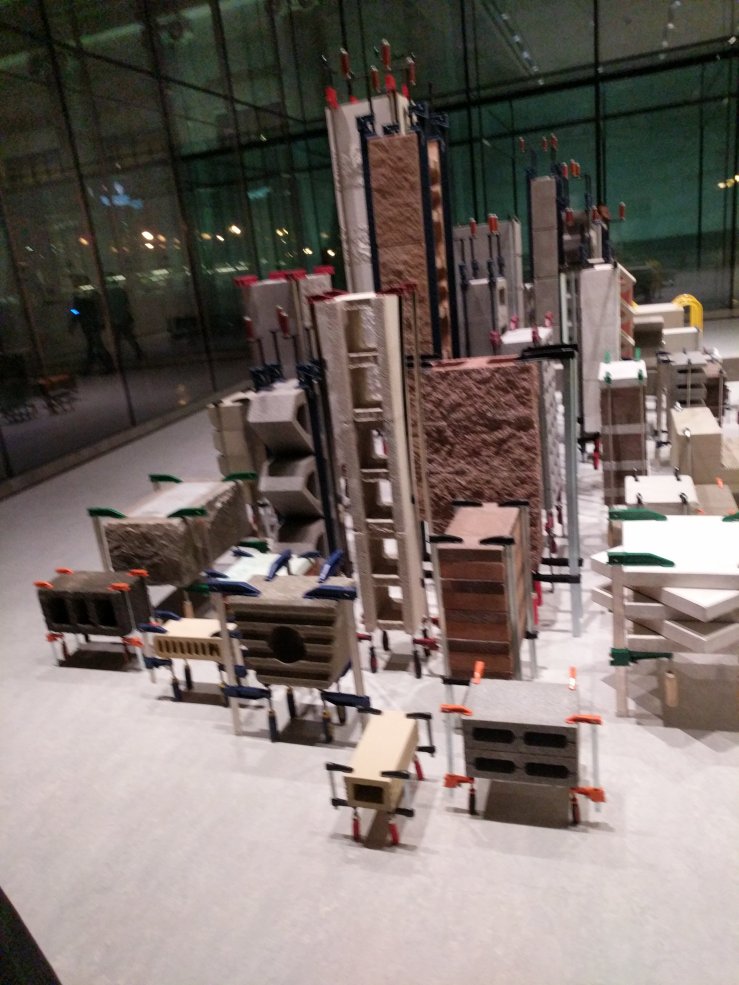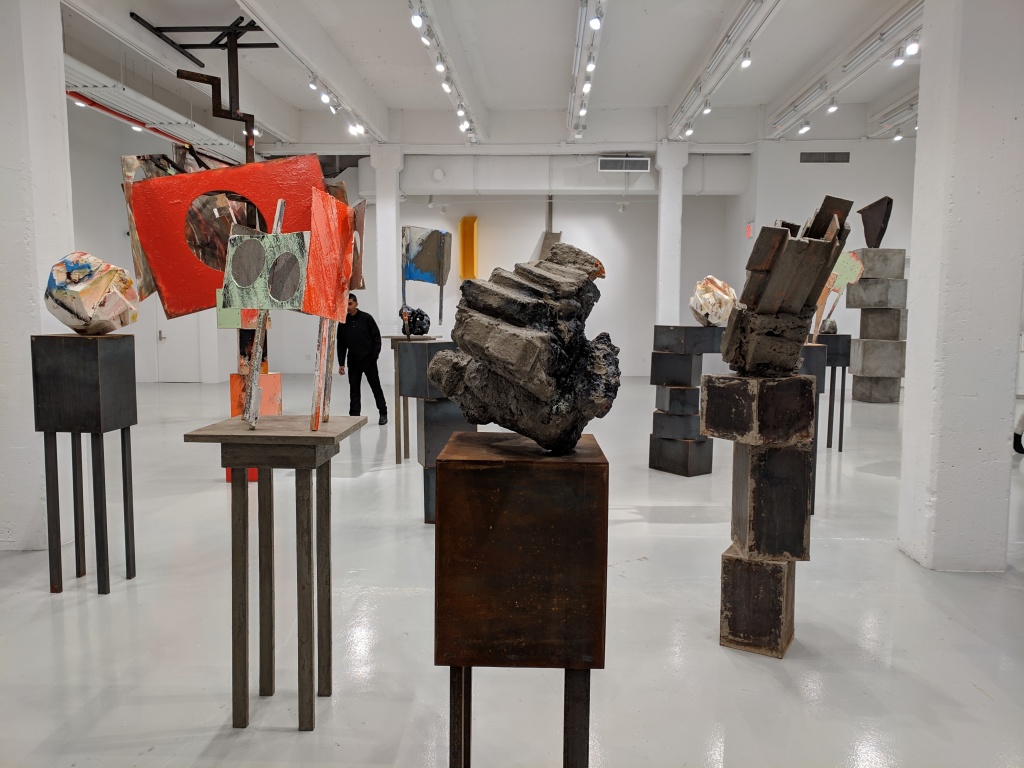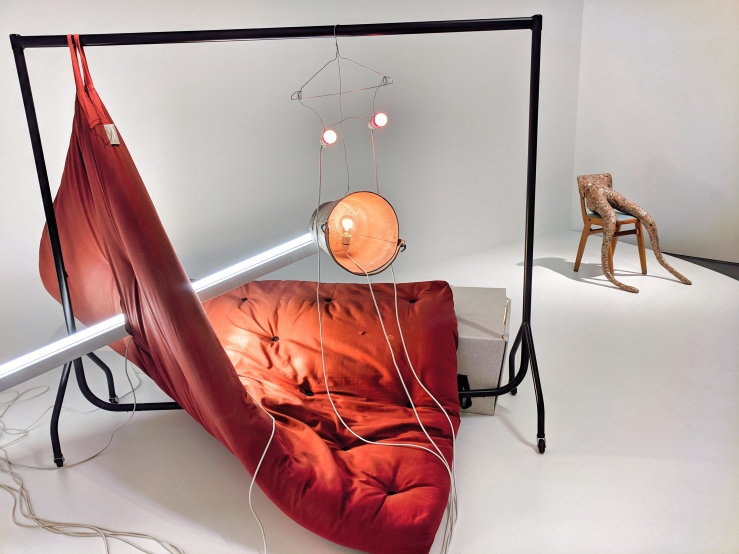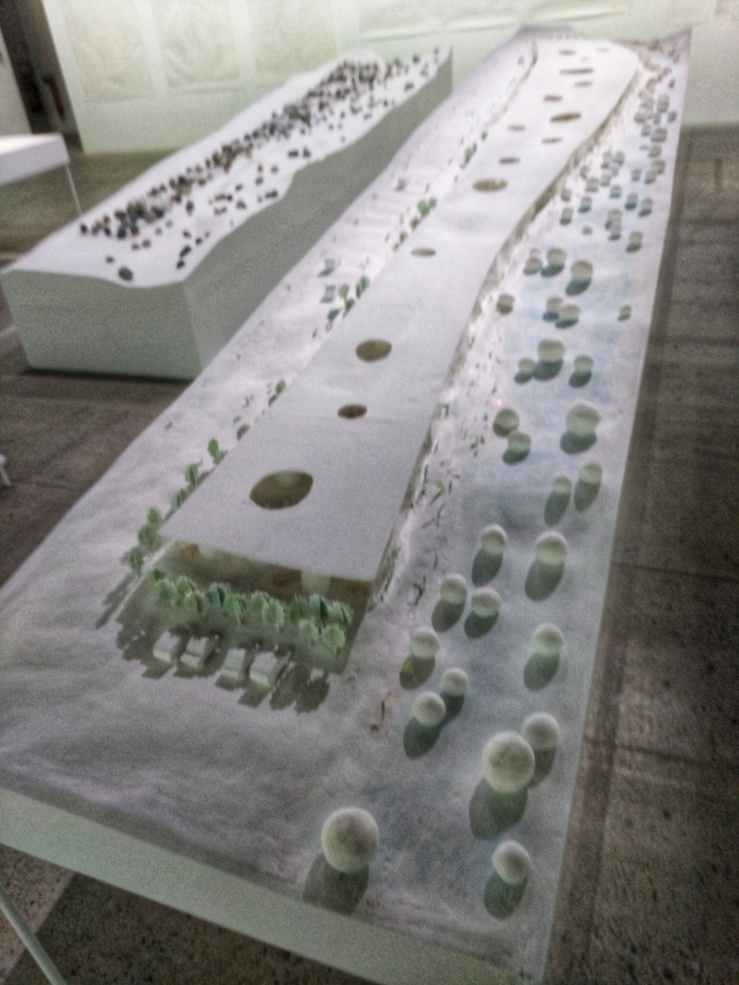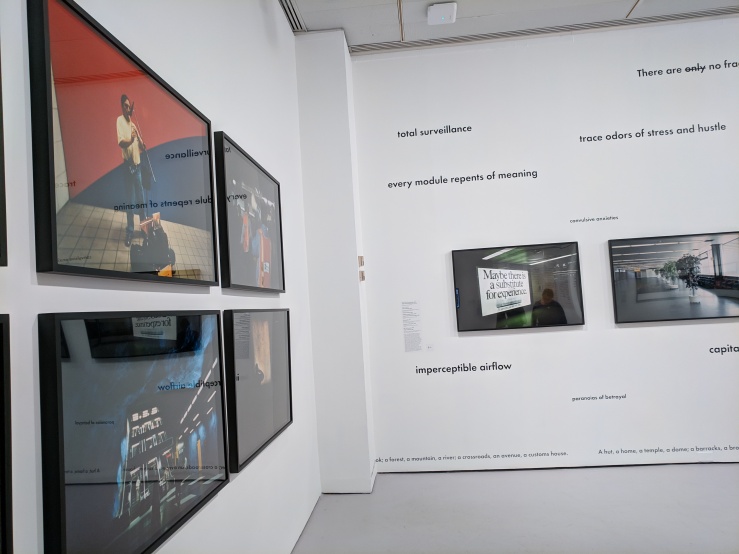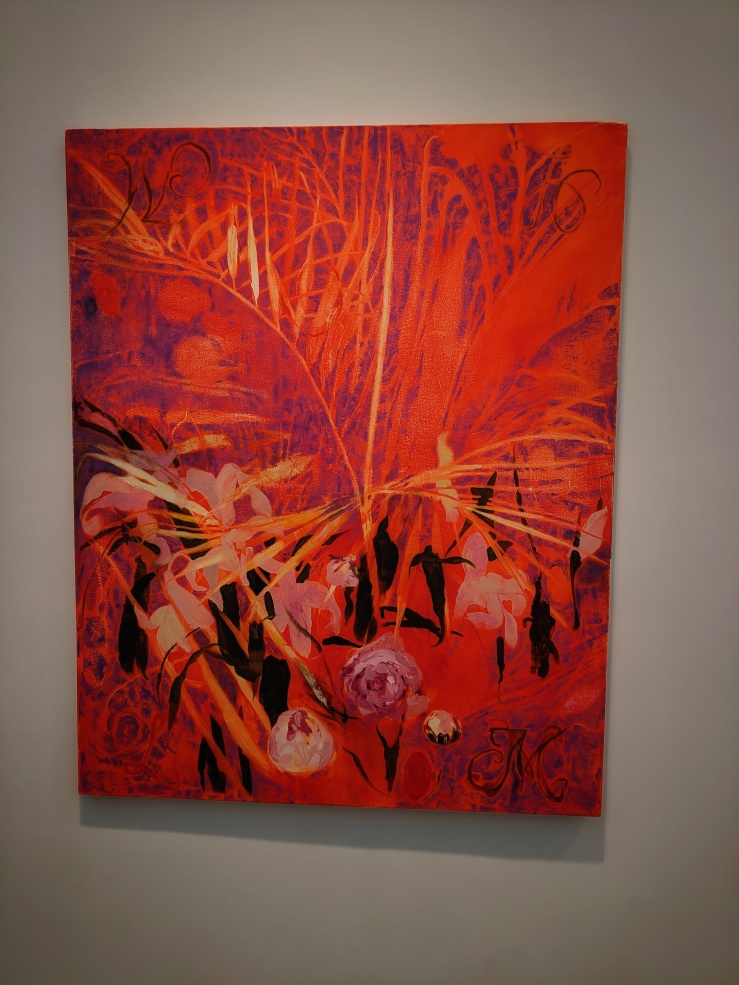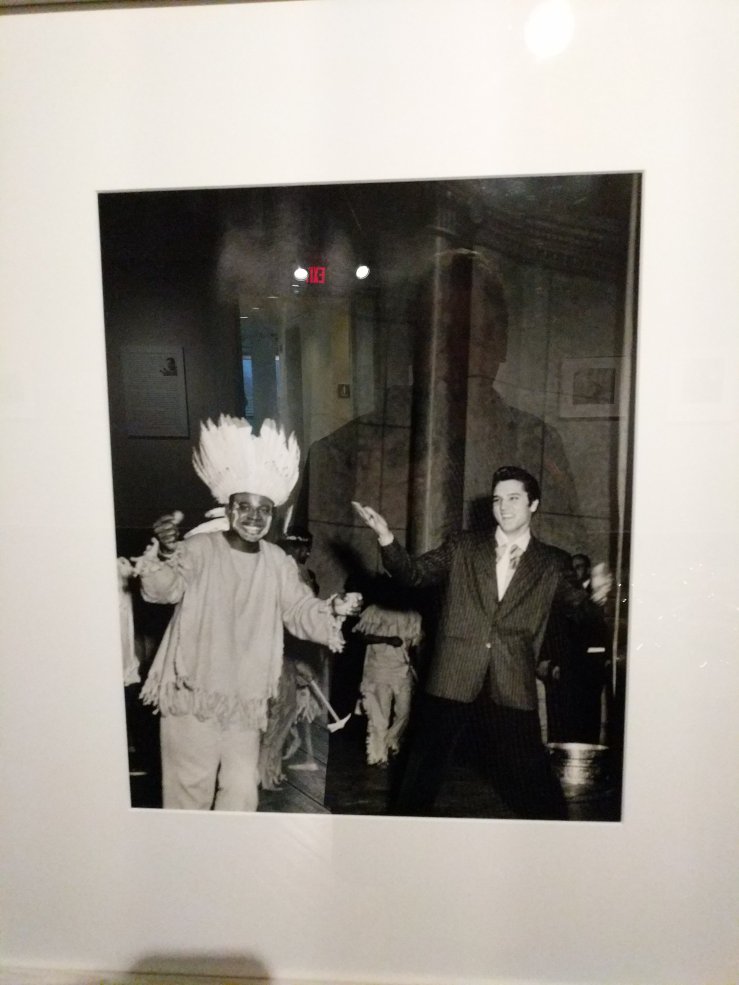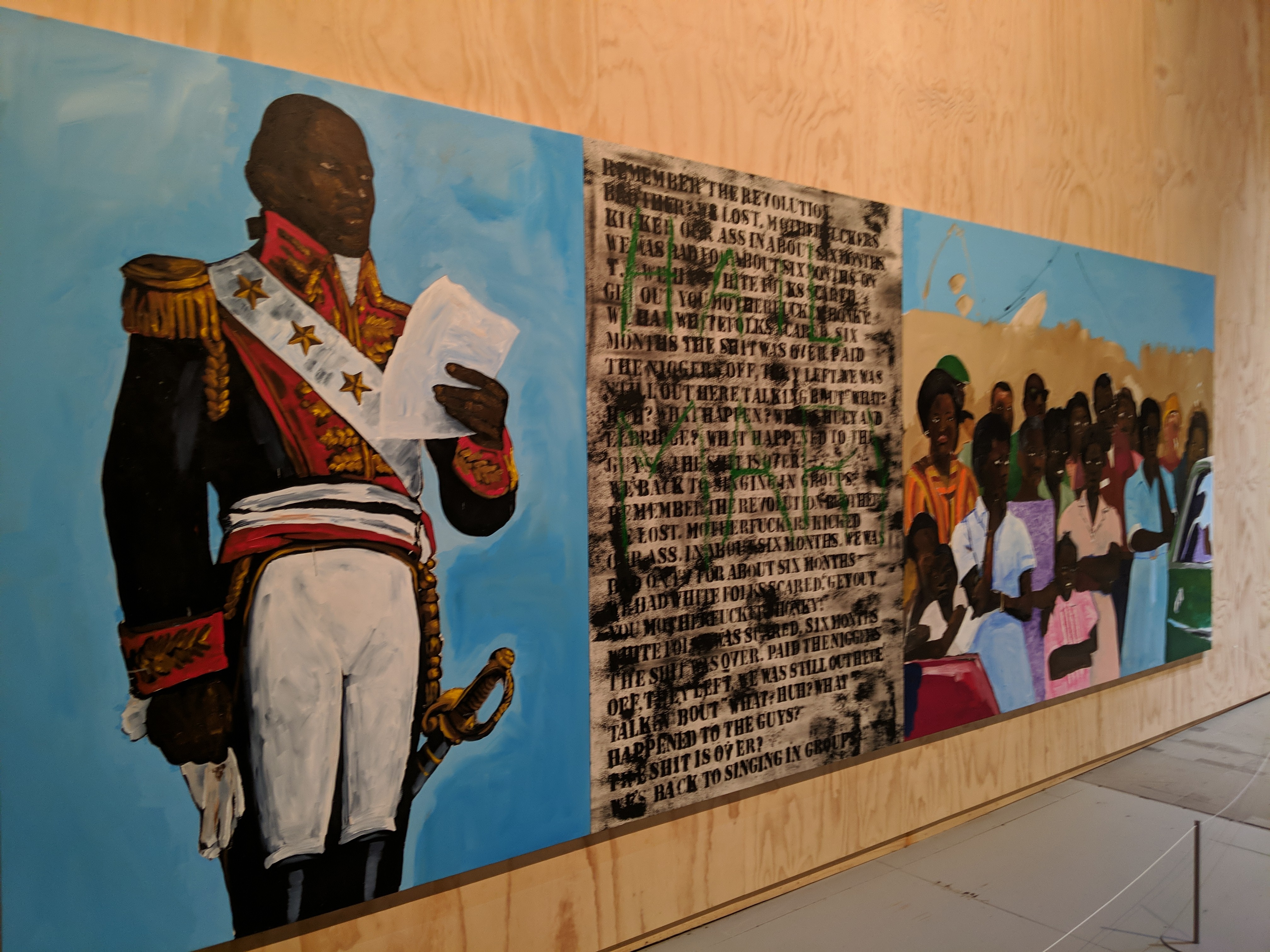
“If you notice anything,
It leads you to notice
more
and more.”
– Mary Oliver, “The Moths”
In this year – by turns more magnificent than I could hope and immeasurably shitty – visual art continued to be a balm, a lifeline, and a reminder to wake up and try harder. I was lucky enough to catch 75 exhibits over 9 cities in two countries. I left this one ranked – unlike the two performance lists which I put in (mostly) chronological order – we’ll see if I stay comfortable with that.
Everything below is in Columbus unless otherwise noted. All photos have been taken by me for reference for discussion with no claim on the original work, unless otherwise noted.
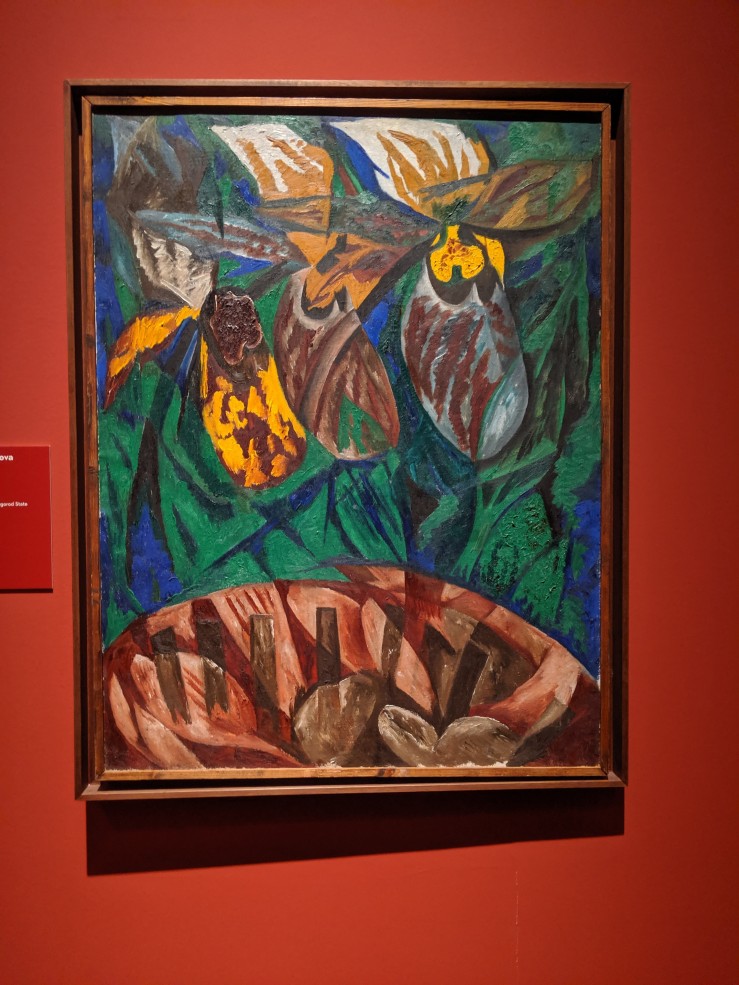
- Various Artists, 2019 Venice Biennale: May You Live in Interesting Times (various locations, Venice) – It’s hard to compete with new – my memories of the first Whitney Biennial I was lucky enough to visit are stronger than my memories of this year’s (for more reasons than one) – so it’s not surprising I was so dazzled by my first Venice Biennale. That said, my eyes almost popped out of my head, from the main exhibit curated by Ralph Rugoff with the best overview of artists grappling with the current shifting, chaotic moment, to the various national pavilions haunting and inspiring, to the satellite exhibitions (a storefront dedicated to Sierra Leone knocked me over), this took me back to the best parts of that childlike state where everything’s new and I’m hungry for all of it.
- Barbara Hammer, In This Body (Wexner Center for the Arts) – Barbara Hammer’s work has always fascinated me and the Wex – led by its curator, Film/Video Studio Program Curator Jennifer Lange – outdid themselves with this exhibit put together up to Hammer’s death this year. The kind of grappling with mortality that doesn’t come easy, a fusing of rigor with the sensuality her work reminded us can never been separated from politics and society. I spent hours in the main installation, walking through X-Ray negatives bathed in a haunting film, I even went the day after my stepsister’s funeral, and it comforted and challenged me every time.
- Natalia Goncharova, Natalia Goncharova (Palazzo Strozzi, Florence) – This was a happy surprise for my first trip to Florence and a source of immense chagrin that the only thing I know of Goncharova previously was her costumes for Dhagliev. A cornucopia of classic high modernism practiced at a level almost no one could match. Masterpieces in dialogue with all the better known names of her time – Picasso, Chagall – while never feeling like she was trying on techniques. A time that felt like the end of the world mapped out and sung in a voice I couldn’t forget.

- Suzanne Lacy, We Are Here (SFMOMA and Yerba Buena Center for the Arts, San Francisco) – Suzanne Lacy’s a brilliant example of an artist who works directly with society, never content to only let her work be uplifting. This retrospective, spread across downtown San Francisco’s two main institutions, reminded me how vital her work still is and how inspiring her mission).
- Joan Mitchell, I Carry My Landscapes Around With Me (David Zwirner, NYC) – Joan Mitchell’s been one of my favorite painters since I first saw her work; some days, she’s easily my favorite of the Abstract Expressionists. This retrospective of her large-scale paintings at David Zwirner was earth-shattering for me; taking that fusion of abstraction and landscape many of us associate with Kandinsky and exploding it into other worlds. A crystallized moment of the 20th century and a reverberation through the foreseeable future.
- Jason Moran, Jason Moran (Wexner Center for the Arts) – Moran’s one of my heroes since I first heard Black Stars when I was in college. His appearance with the Bandwagon is one of my all-time top five concert experiences at the Wexner Center. This look at his – often collaborative – visual art was stunning. The detail-rich replicas of key spots from jazz history loom in the middle, heavy with history as tombs but also vibrating to be reactivated. His video work with Carrie Mae Weems and Stan Douglas hinted at secret histories. I had some issues with the selection of the live performance aspects – would have liked more things like the opening Ogun Meji – but I kept visiting and unpacking this.

- Various Artists, Everything is Rhythm: Mid-Century Music and Art (Toledo Museum of Art, Toledo) – 40s-60s contemporary art and music are obsessions of mine, still, and this multimedia presentation in the always excellent Toledo Museum was the best, most approachable tying-together of those threads I’ve ever seen.
- Lorna Simpson, Darkening (Hauser and Wirth, NYC) – I knew Lorna Simpson’s photography work a little but this selection of layered, gripping paintings felt revelatory. The light growing dim so you have to lean in and then the cold opens you up.
- Various Artists, Detroit Collects: Selections of African American Art from Private Collections (Detroit Institute of Art, Detroit) – Private collectors in museum contexts are problematic but everything about this warmed me up, members of Detroit’s black community talking about collecting black art and fascinating examples of what draws them to it and keeps them going. A deep dive into the best parts of collection and curation – paying tribute, keeping voices alive, giving you something to pass onto your children.
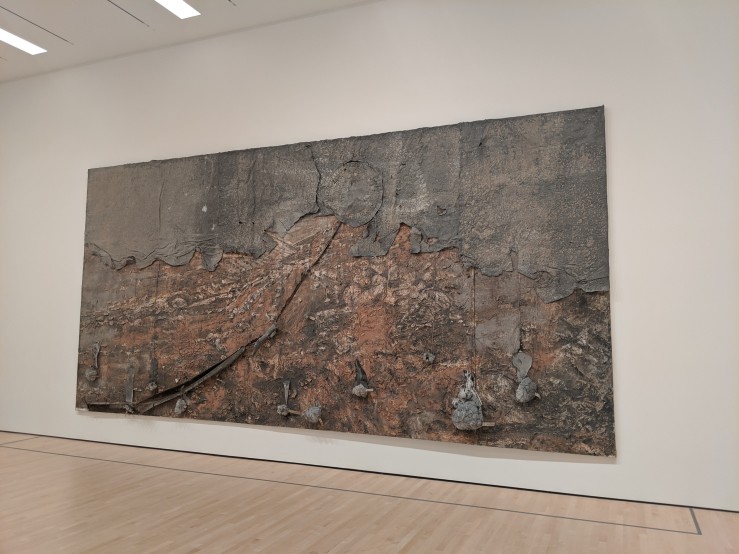
- Various Artists, Leonard Cohen: A Crack in Everything (Jewish Museum, NYC) – Various artists taking on Leonard Cohen, one of the most imagistic lyricists of the 20th century made this lifelong Cohen fan’s heart grow three sizes. The variety of work, from an amateur men’s choir doing “I’m Your Man” in multichannel video to an organ that played a word with each key to an installation where “Famous Blue Raincoat” synchronizes with a flood of iconography, there was so much to love here.
- Various Artists, Artistic License: Six Takes on the Guggenheim Collection (Guggenheim, NYC) – Celebrating an anniversary, the Guggenheim turned to artists to contextualize the parts of the massive modern art collection and it’s the best use of the iconic Frank Lloyd Wright building and the best use of a giant collection of holdings I’ve seen in years.
- Various Artists, German Abstraction After 1950 (SFMOMA, San Francisco) – This era – Kiefer, Richter, et al – is a personal favorite of mine and this was an embarassment of riches I couldn’t believe I was seeing all in one place.

- Peter Hujar, The Speed of Life (Wexner Center for the Arts) – I loved the John Waters piece that ran in parallel with Hujar, and I loved seeing the two dialogue with one another but the Hujar wrecked me every damn time. A reminder how potent portraiture can be in letting us see and a reminder to be grateful for our networks and the love around all of us.
- Simone Fattal, Works and Days (MoMA PS1, NYC) – An artist I knew nothing about before this trip to PS1 knocked me sidewise. Sculptures and watercolors working through the consequences of archaeology and imperialism, knowledge and the stories we tell ourselves. I needed far more hours than I had to properly appreciate this but it’s still with me.
- Walid Raad, Walid Raad (Paula Cooper, NYC) – Walid Raad’s alternate history work reminds us all how science fiction tropes can illuminate real world pain and challenge. His puzzles dare you to tease out the facts from the greater truth and complicate your own feelings as you work through them.
- Nancy Spero, Paper Mirror (MoMA PS1, NYC) – Spero’s work benefited from the volume and the jumble of this perfect PS1 show, words coming at the viewer like daggers but so many you can’t focus on any one, you have to give into the flood.

- Gordon Parks, The New Tide: Early Work 1940-1950 (Cleveland Museum of Art, Cleveland) – Gordon Parks’ social realist photography is always a wake up call to being alive and this tight, well-curated collection in Cleveland was exactly what I needed in a summer of too much feeling sorry for myself.
- Sondra Perry, A Terrible Thing (MOCA Cleveland, Cleveland) – Perry’s video work dug deep into infrastructure and invisible labor in a biting, potent critique that sung.
- Various Artists, arms ache avid aeon (CCAD’s Beeler Gallery) – Jo-ey Tang’s work with the Beeler Gallery is coming into its own; I love his specialty of slow exhibitions that evolve over periods of time and this look back on the fierce pussy collective, capped by a symposium that was the most energized I felt all year, was a dazzling, meditative explosion.
- Huma Bhabha, The Company (Gagosian, Rome) – In a trip spent gorging ourselves on old masters and antiquity, Bhabha’s sardonic looks at the modern age was the perfect palate cleanser.
